The last wars of the Yuan Empire
Yuan attacks Crushes
Daviet clearly understood that their refusal to let the Sino-Mongolian troops pass would not remain without consequences. During 1283-1284. they prepared for the defense, armed the militia. Considering the mortal danger to the country, the king gathered not just a meeting of heads of clans, but a meeting of all tribes, at which it was decided to fight.
A considerable number of Han emigrants from the Southern Song Dynasty empire accumulated in Daviet. They formed a separate army under the leadership of "General" (jiangjun) Zhao Zhong. The Daviet people also sent help to the Cham during their struggle with the Mongols. Sagatu, realizing how difficult it is to move troops over such long distances, proposed creating a bridgehead against Champa in Daviet and providing the invading army at the expense of the Vietnamese.
In 1285, the fleet of the Yuan Empire, which was heading for Champu, approached the shores of Daviet for the landing of troops, but on the coast it was awaited by the fortifications and the army of the kingdom. And the fleet with the troops of Sagatu went to Champa. At the same time, the Mongols moved the army to the rear of the troops defending the border coast on dry land, it was commanded by the son of the Emperor Yuan, Tugan (Togkhan). The defending troops, under threat of encirclement, retreated into the interior of the country, their capital was captured by the Mongol-Chinese troops. The Chinese defeated the Daviet fleet.
The commander Chan-hing-Dao was able to save the army, while the invaders scattered their forces. The Vieta pursued a policy of scorched earth, under pain of death, the government demanded evacuation from the communities, while it was necessary to destroy buildings. Rafts were launched along the rivers with the hanged, those who disobeyed the king. The war took the form of a "people's" war.
Tugan's troops advanced to Champa, from there Sagatu's troops marched towards him. The armies were starving, and then an epidemic began, the companion of all wars, associated with the accumulation of huge masses of people. Actually, the Mongols, who in all wars suffered from the heat, where there were such climatic conditions, suffered in this campaign.
In the delta of the Red River, the armies of Tugan, Sagatu, Li Heng and Li Guan and the fleet of Sam Omar were supposed to unite, but the commander Chiang-hing-Dao thwarted these plans, constantly attacking enemies, especially the troops of emigrants from Song distinguished themselves in battles.
During the retreat of the Yuan to the border, the Vieta killed the commanders Sagata, Li Heng and Li Guang, only Khubilai's son and a small number of troops escaped.
The defeat of the expedition infuriated the emperor, who postponed the invasion of Japan in order to focus on the Viet: at the council of all heads of the districts, it was decided to march to the southern countries, and 300 ships were built on the Yangtze. But for the campaign, the Mongol-Chinese army was assembled from only three southern provinces.
500 ships carried food, they were commanded by the Chinese Zhang Wenhu, the vanguard was commanded by Omar. The commander was again Tugan (Togkhan). In the winter of 1287-1288. Yuan's troops moved from Guangxi to the border by two roads. They were approaching Vankiep, and Omar, leaving the cargo fleet unprotected, rushed along the river. Batdang to help Tugan.
Now the Vieta were victorious at sea, blocking the Chinese fleet. To break free, Zhang Wenhu had to throw cargo into the sea, thereby depriving his army of food. He went to Hanan.
The Vieta sent prisoners to Tugan in order to demoralize the Yuan. But Tugan, in the style of "the best defense is an attack," decided to quickly take the capital. Commander Abachi went to him with battles from Yunnan. Having united, the troops crossed the Red River and took the capital Thanglaung by storm. The Vieta destroyed all the food in the vicinity of the capital, Omar's attempt to bring food failed, he returned to Thanglaung, and Khubilai went to Vankiep. From here he (in the classic Mongol style) raided the surrounding area.
The Vieta decided to prepare a "surprise" for fleet Omar. They already did this to the Chinese invaders. The Vieta skillfully "led" Omar to a tributary of the Batdanga (Bach Dang) river.
The ships ran aground or stumbled upon sharpened tree trunks specially dug into the bottom. Five hundred ships of the fleet and Omar himself with several Chinese commanders went to the Vieta. Chan-hing-Dao commanded the battle and personally fought the enemy. Tugan, on the eve of the tropical heat, in a situation of famine and epidemic, on the advice of the commanders decided to retreat from Daviet, but this retreat turned into a flight. Regular troops and partisans pursued the Mongols and Chinese on the heels, and led enemies into ambushes and traps. During the retreat, Abachi, a promising Mongolian commander, also died. The Vietnamese sent Omar and Fang Ji to Yuan, but they drowned along the way.
Daviet's victory influenced the situation throughout Southeast Asia, where the countries threatened by the Mongols realized the opportunity to successfully resist them.
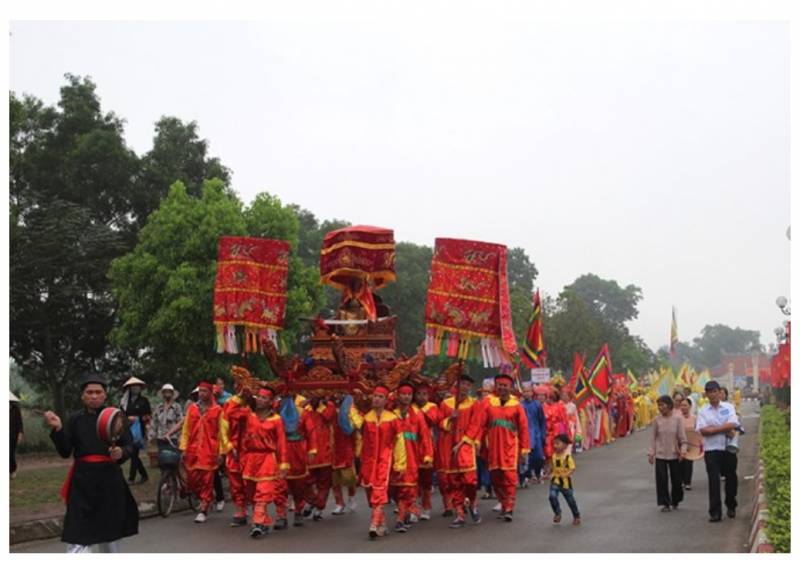
Procession in honor of the victories of the Vietnamese over the northern invaders on the river. Batdang at Chan Hung Dao Temple. Contemporary photo. Quang Ninh province. Vietnam.
Viet's victories came at a time when the Yuan was at war with the rebellious nyons in the north of the empire. This is the first thing.
Secondly, Vietnamese society was at the stage of the tribal community, and the "nationwide war" is a form of struggle of all clans against the invaders. The Mongol-Chinese army clashed with the army-people who fought in their native places.
It was also important that the Vieta were practically a monolithic society, and most of the countries that the Mongols attacked had ethnic contradictions. The high fighting qualities of the Mongols here remained at their best, but victory in the war, even in ancient times, was not limited solely to them.
The Yuan held the Daviet in constant tension for six years, after which the empire abandoned its military claims.
Countries of the south seas
The yuan quickly borrowed the policy of the Han states with respect to the state formations of Indochina and the South Seas, on the islands of the Malay-Indonesian archipelago, especially since it got into her hands a reliable instrument for promoting such a policy - the fleet. A large number of Muslim merchants who lived on the islands became natural allies of the Mongols, in whose ranks there were many Samu, immigrants from Central and Western Asia. Of course, the Mongols and ethnic contradictions in this region have traditionally used it.
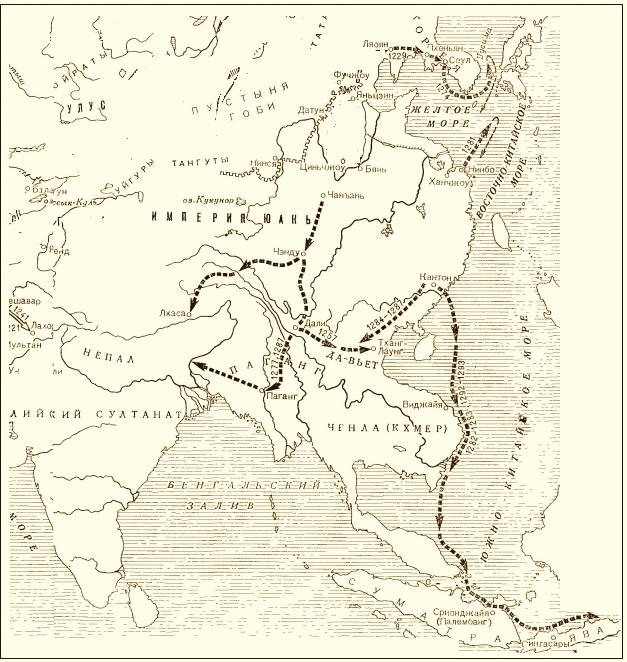
Yuan Empire campaign map. Tatar-Mongols in Asia and Europe. M., 1977.
And the wealth of these states attracted not only merchants. Marco Polo, who, of course, liked to greatly embellish his narrative, wrote about Java:
They have pepper, nutmegs, spices, galangal, cubeba, cloves and all kinds of expensive spices that are in the world. Many ships and merchants come here, buy goods here and make money. There is so much wealth here that no one in the world can count or describe. "
In 1281 the Muslims Suleiman and Shams ud-din were sent to Sumatra as ambassadors. Sultan Sandura Malik As-Saleh gave them a warm welcome, welcomed the Mongols and the "empire" of Singasari (Java), and their subordinate Malaya. But in Java, King Kertanagar, having learned about the defeat of the Yuan in Vietnam, branded the ambassadors for their impudent speeches.
But, as you know, the new empire in China was not enough. The campaign, which began against Champa, was to end with the capture of the Khmer "empire" of Cambujatesh and the countries of the South Seas.
After the departure of the Mongol-Chinese troops from Daviet, Khubilai began preparations for a sea campaign to the south, but the campaign took place after his death. In his instruction it was said that the army
At the end of 1292, the new emperor Oljeytu-Timur sent about 1 ships and vessels and 000 thousand soldiers to the south.
Sailors and warriors were recruited from among the Han people of the former Song Empire. Despite the fact that the campaign was sea, it was led by the Mongol Shi Bi, Semu, the Uighur Ikhmish commanded the landing, and the Chinese Gao Xi commanded the sailors.
In February 1293, the fleet began to seize: first they took the island of Belitung (modern Indonesia), followed by Bali. In March, the Yuan landed at the city of Tuman in Java. To the delight of the Mongols, strife began in Java, the enemy of the Mongols, King Kertanagar, was killed. As a result, his son-in-law, Prince Vijaya, ascended the throne, but he was defeated by the usurper and turned to the Mongols. They were ready to help, provided that the prince would give a solemn welcome to the soldiers of the Yuan Empire, to which he agreed.
And the usurper, the prince from Kediri, gathered a huge army, which met with the landing on the Brantas River in April 1293. The battle lasted a whole day, but the Mongol-Chinese army won. The usurper Jayakatvan, having received an offer to surrender on honorable terms, agreed, and returned to his place in Kedir. And Vijaya soon destroyed a detachment of Mongols of 200 soldiers and began a fight with the Yuan, who could not oppose anything to the guerrilla war. Warriors of Java set up ambushes in mountain gorges, attacked carts on the roads, while avoiding large clashes.
Gradually, the Yuan troops were forced to liberate the occupied territories, retreating to the camps that covered the ships. During the retreat, the Chinese rearguard was ambushed, and 3 thousand soldiers were killed. Realizing the futility of the landing operations, at such a great distance from the supply and resource bases, the military council decided to return to China. On May 31, 1293, the Yuan warriors left Java. During the military expedition, the captured trophies were extremely meager.
If the Yuan Empire continued to dominate the countries of Southeast Asia, then military campaigns against these countries were terminated.
Huge efforts did not correspond to the results, it is one thing to conquer the Sun or Khorezm, and another thing - Daviet. Moreover, the acquaintance of the most understanding of the Mongol nobility with the system of exploitation on the territory of sedentary states in China promised greater benefits than long, tedious campaigns.
Despite them, the "ruling people" were not rich. Some Mongols at this time, out of poverty, sold their children into slavery. Khubilai, of course, made an effort, like a great khan, to support his warriors. "Yuan Shi" reports a lot about this, for example, under 1289:
But that energy, that connection, which undoubtedly existed between Genghis Khan and the Mongols, as a warrior-people, under the influence of external conditions, like all great nomadic tribes in such a situation, was severed.
Japan
Japan, as a country that had contacts with Korea and the Song Dynasty, also fell into the zone of attention of the new empire.
As Marco Polo wrote about Japan:
There is an abundance of pearls here; it is pink and very beautiful, round, large; he is expensive, like white. They also have other precious stones. A rich island, and you can't list its riches. "
The Mongolian Great Khan already had claims to Japan.
First, Japanese merchants supplied the Sung people until the last day of the Chinese empire.
Secondly, the Koreans, who became Yuan subjects, from the 20s of the XIII century. were attacked by Japanese wako pirates from the islands of Iki, Kyushu and Tsushima. In 1263 Khubilai punished the pirates and stopped their attacks. He also decided that Japan could submit to the Yuan dynasty empire without a war: he sent an ambassador, accompanied by Koreans in contact with the Mongols.
Emperor Kameyama, like other heads of state, clearly understood what the Mongol threat was, and he delayed the return of ambassadors. Van Korey even wrote to him with a request to return the ambassadors, which he did. But the emperor was not the real ruler of the country, performing decorative functions, which in Japan also did not contribute to a quick solution of matters, since all issues had to be coordinated with the bakufu, which bore the title of "shogun", Hojo Tokimune.
Khubilai, realizing that the Japanese were delaying their response, began preparations for the campaign, while he sent another embassy accompanied by the Koreans in 1271 and 1272, the Koreans secretly warned the Japanese about preparations for the invasion.
Ambassador Zhao Liangpi conveyed an ultimatum to the Japanese emperor, and upon his return made a report to Khubilai about Japan, the people and customs of the country. The Japanese clearly understood that there would be an invasion, but, one might say, they did not prepare for it.
The answer here is always simple, it is not always possible to prepare for everything, not always your capabilities and resources allow you to prepare for everything in advance.
At the same time, the Mongols were successful in the fight against the Song and were able to allocate small forces for a campaign on the Japanese islands.
In 1274, the Mongol-Korean fleet moved to the islands of Japan, the fleet consisted of 300 ships and 400-500 small ships. The expedition was headed by the Mongols: the Hindu, the Naimans Nanjiatai and Kudukas. The operation was mainly attended by Mongols and Turks.
All of them were battle-tested warriors who crossed more than one great river of Eurasia, but they did not have to take part in a sea campaign. The Mongols also brought with them the masters of throwing machines and even "bombs" for them, tepao, iron powder shells.
Returning to the preparation for war, it must be said that the Japanese samurai, whom many researchers consider, according to the European scheme, to the early feudal knights, did not possess either combat experience or tactical skills inherent in the Mongols.
If the samurai fought according to certain rules, through which it was shameful to cross, then the Mongols, the people of war, resorted to any actions that could lead them to victory in the battle, no ceremonies, codes, written regulations and instructions or customs constrained them in this ... Except for predictions and fortune-telling.
Samurai, who fought exclusively in duels, with the help of squires, had no idea about the tactics, flanking attacks and deceitful flight that the Mongols constantly used.
The islands of Tsushima and Iki were captured on the move, but on about. Kyushu landing Yuan clashed with Japanese troops, the Mongols used their entire arsenal against the samurai, including tepao, shocking the samurai. A battle began known as the Battle of Bunei. The onset of night saved them from defeat, and then the hurricane and storm destroyed half of the landing, and the Mongols retreated. This was, from the point of view of the Japanese, not accidental, but divine intervention.
Khubilai, hoping that the invasion frightened the Japanese, sent a new embassy in 1275, which was demonstratively executed by the Japanese. And the "shogun" Hojo Tokimune began to build fortifications along the entire coast of the country. He built a stone wall and created mobile detachments, which were to move quickly towards the landing sites of the Mongols. He again executed the Yuan embassy in 1279.
Khubilai appointed Hundu as commander, and the Chinese Fang Wenhu and the Korean Hon Tagu led the invasion. Fang Wenhu commanded the fleet, in addition to the Mongols and the Chinese, the Korean government provided an army of 10 and sailors. Much time was spent on equipping the army with throwing equipment: crossbows and ballistae were installed on ships. In total, according to sources, there were more than 100 thousand soldiers in the invasion army, the main force in it were the Chinese.
In 1281, the invasion army, consisting of two fleets, sailed from China and North. Korea with the aim of uniting at Iki Island. Marco Polo wrote that rivalry began between the commanders.
A fleet from Korea occupied Iki; during the capture, a Japanese commander died from a tepao explosion. Then the Korean fleet landed troops in the north of Kyushu, north of the wall erected by Hojo Tokimune. A fleet from China landed troops in the south of Kyushu, which launched an offensive to the north. A two-month battle began for the walls on the coast, the Yuan troops, superior to the Japanese, both in technology and tactics, went to victory, the Japanese samurai fought with their last strength. But a divine wind intervened in the matter, a hurricane typical of these places hit the coast, the attempt of Korean sailors to save people on ships was unsuccessful, the storm sank the ships:
Marco Polo wrote that the soldiers abandoned to their fate broke through to the Japanese city and fought there surrounded, but, realizing the hopelessness of the struggle, surrendered. However, this information is not confirmed by other sources.
In 1283, a new campaign began to be planned in Beijing, and Zhang Lin, a master who knew how to make "Muslim" stone throwers, arrived in Korea. But it was postponed several times. It must be understood that during this period there was no longer a single vision of the expansionist policy. If even 80 years ago it was a unified system aimed exclusively at war, then the Mongols at that time no longer had such unanimity. Part of the Mongol nobility, finding themselves in more comfortable conditions of sedentary states, already during this period preferred stable incomes from the exploitation of the Chinese population, rather than risky military ventures.
However, the initiators of the campaigns against Japan were not only the Mongols, but also the Chinese in the service of the new empire.
It is significant that after the death of the first emperor of the Yuan dynasty of the Mongol Kubilai in 1294, the military expansion of the Yuan came to naught.
To be continued ...
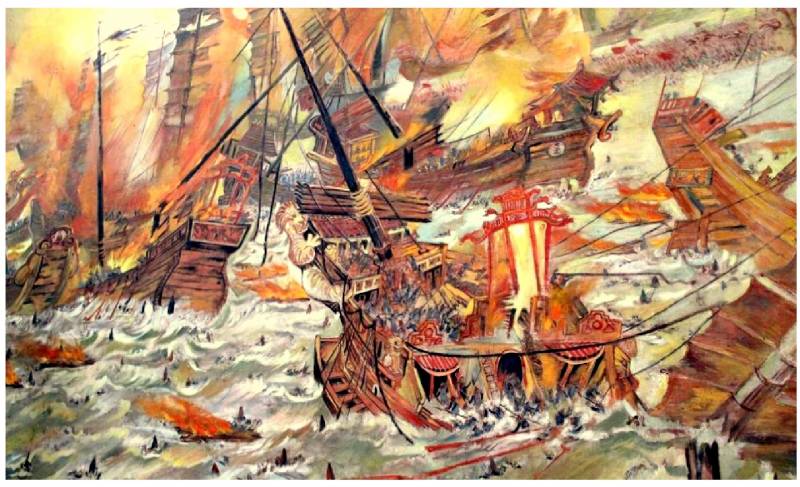
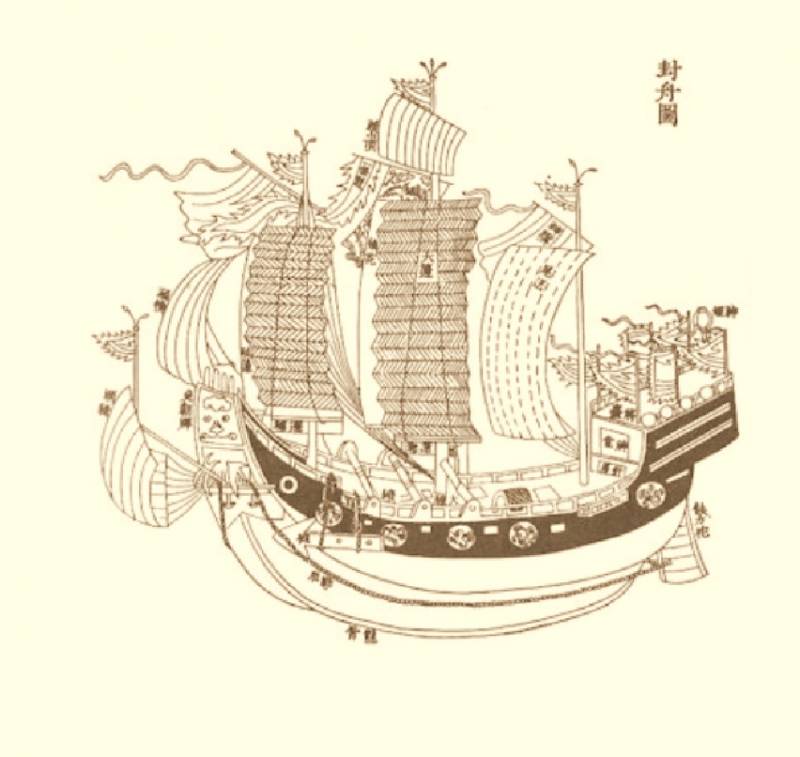
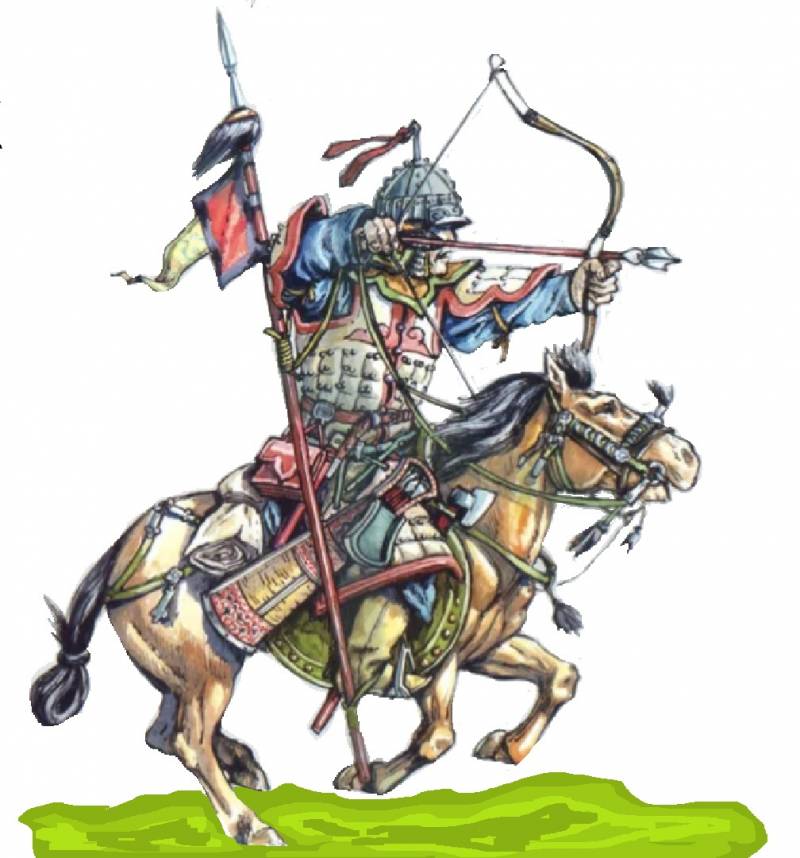
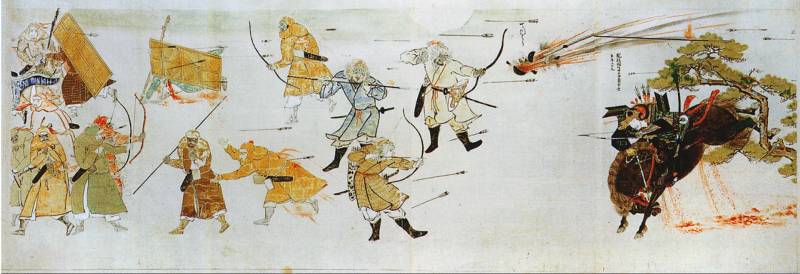
Information